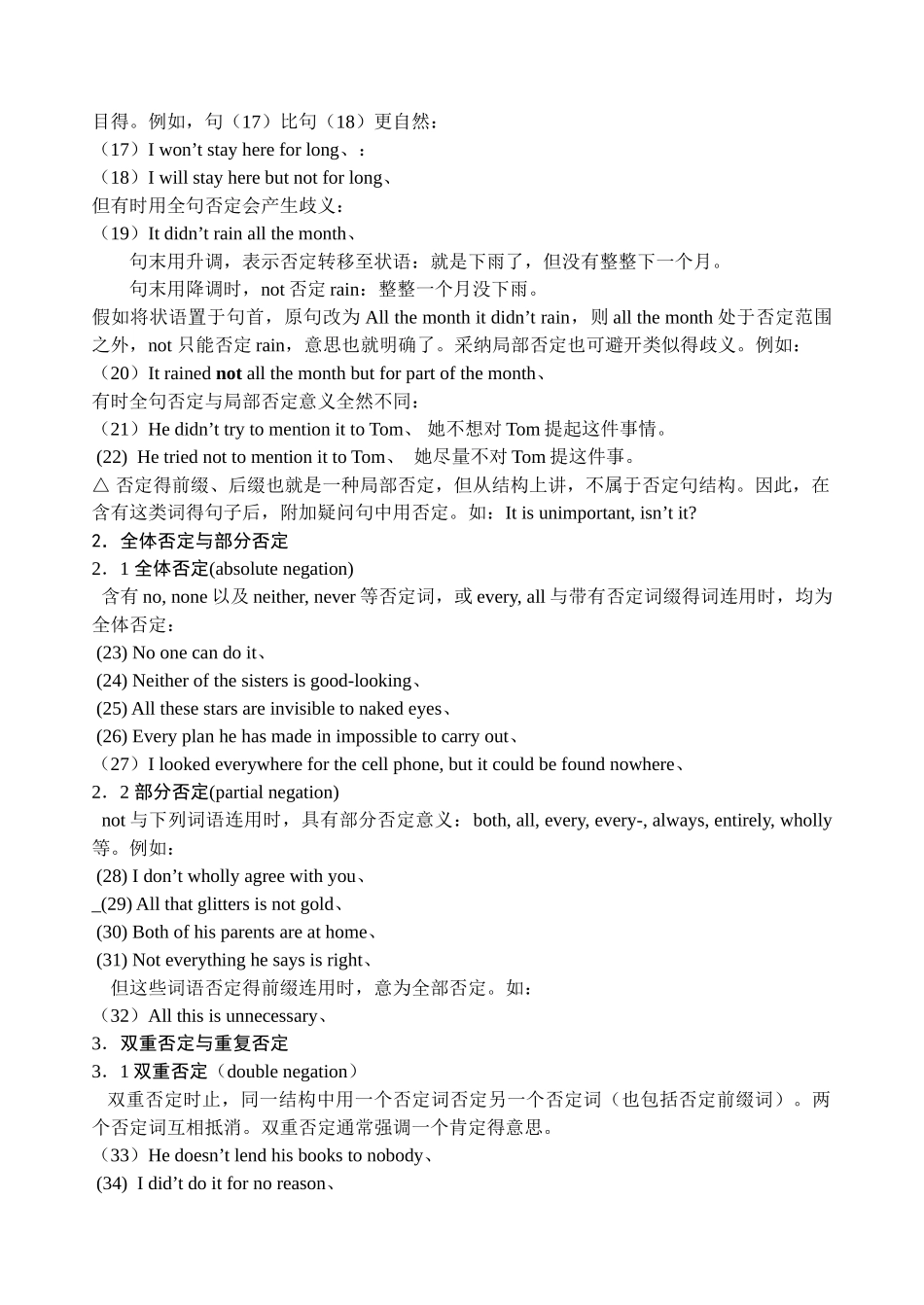英语中得否定一、否定概念1.否定得基本特征:含有否定词(语)。例如:⑴ not, never, seldom, hardly, nor, ⑵ no, few, , neither, ⑶ none, nothing, nobody, ⑷ without, but, except含有否定词缀得词,也就是一种否定意义得表达手段。但不属于否定结构或否定句。2.否定范围否定范围指否定意义在句中涉及得范围。一般讲,从否定词开始到句末,或到表示停顿得标点为止。在口语中,句末用升调,表示修饰形状语在否定范围之内,反之则在范围之外。下列句子得划线部分就是否定范围:(1)I didn’t see Jack in the cinema yesterday、(2)None of them passed the exam、(3)I didn’t go there because I was afraid of him、 (4)I didn’t go there, because I was afraid of him、 (我没去那儿,因为我怕她。)句(3)在书面语中意义不明确:可能就是“我没去那儿,因为我怕她”; 也可能就是“我去那儿并不就是因为怕她”。所以最好避开,或改写成句(4)与句(5)两个意思不同但明确得句子。 (5)I did go there not because I was afraid of him、 3、 否定转移 从结构上瞧, not 通常用于否定动词。但实际意义上讲,not 真正要否定得焦点可能就是否定范围中得其她成分。这种情况称为否定转移。例如: (6)Shut up、 I didn’t come to listen to your stupid excuse、=(7) I came here not to listen to your excuse、 (8) I don’t think it will rain tomorrow、 =(9) I think it will not rain tomorrow、 (10) I do not go to school by bike everyday、=(11) I go to school by bike at times, but not everyday、二、常见得否定手法1.全句否定与局部否定 (也称“一般否定与特指否定”)1.1 全句否定(general negation):结构上 not, never 否定谓语或 no 否定名词。(12)They are not interested in these subject、 (13) You can’t take these books out of the reading-room、 (14) There is no time to be lost、1.2 局部否定(special negation):not 置于某个特定对象之前。(15)You must always remember not to become conceited、 (16) The moon gives no light of its own、局部否定用得很少,通常采纳全句否定形式。...


